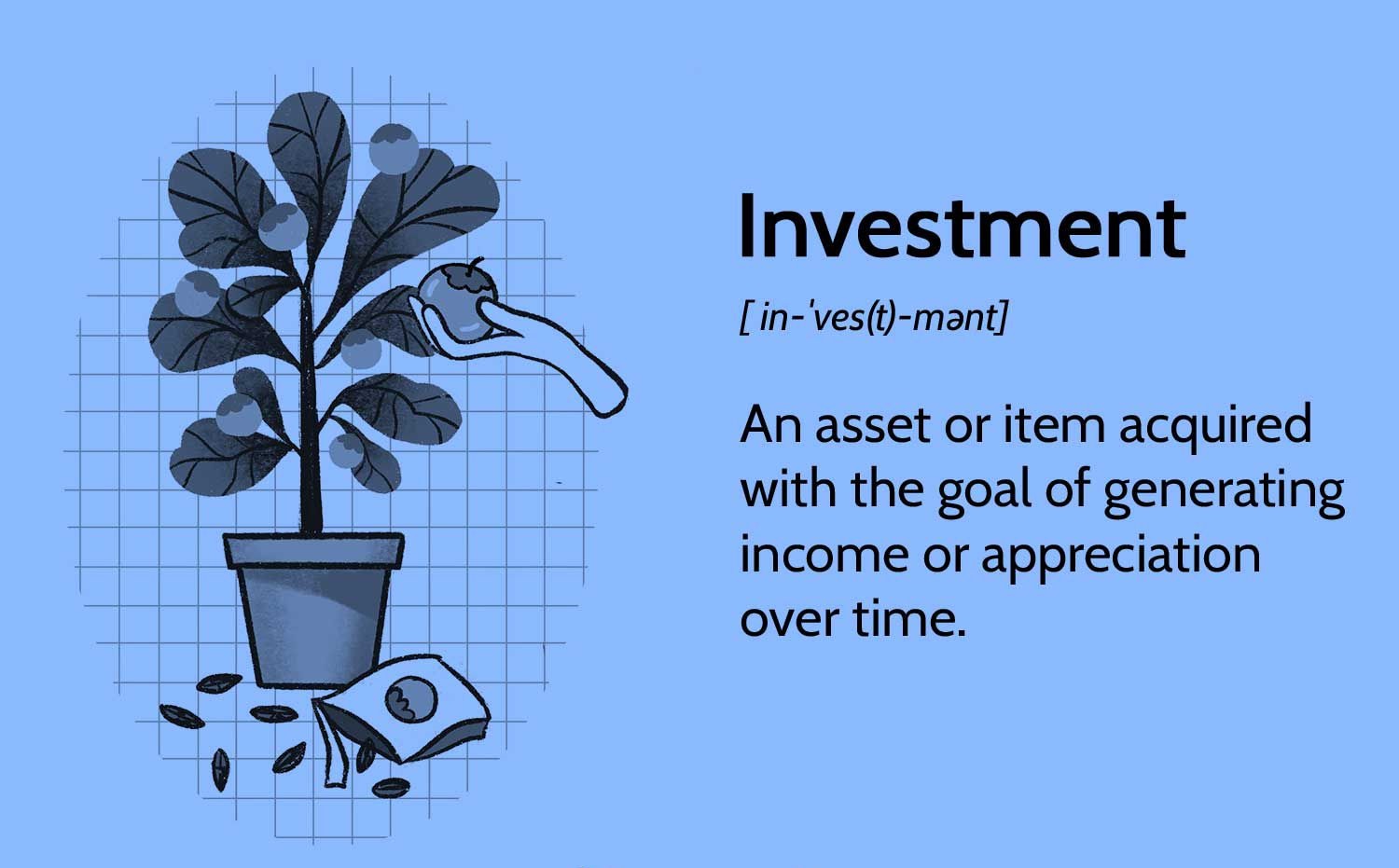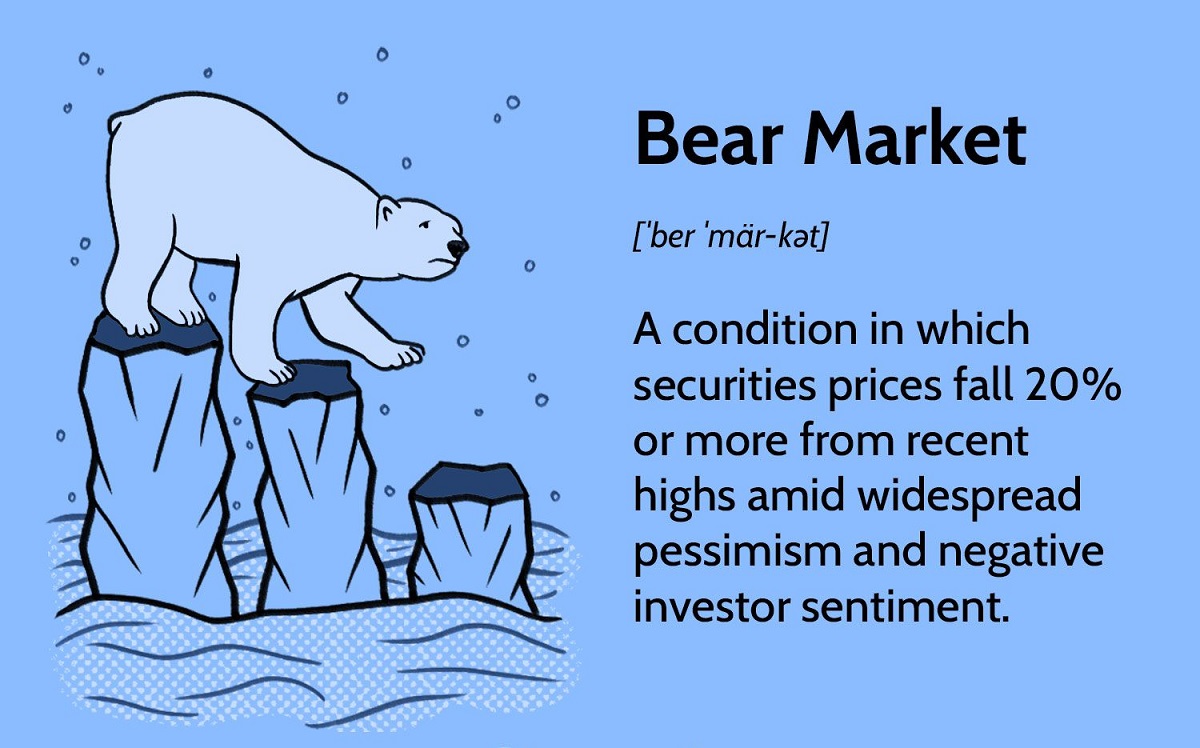Real Estate
Real estate is a time-tested long-term investment option that offers numerous benefits. Investing in real estate involves purchasing, owning, and managing properties for the purpose of generating income or appreciation. Here are a few reasons why real estate is considered a lucrative long-term investment:
1. Potential for Appreciation: One of the primary advantages of investing in real estate is the potential for property value appreciation over time. As the demand for housing and commercial spaces increases, property values tend to rise, allowing investors to potentially sell their properties for a profit in the future.
2. Steady Cash Flow: Real estate investments can provide a steady cash flow through rental income. By purchasing properties and renting them out to tenants, investors can generate a passive income stream that can be reinvested or used to cover expenses.
3. Tax Benefits: Real estate investments offer several tax advantages. Expenses such as property taxes, mortgage interest, and some maintenance costs can be deducted from rental income, reducing the overall tax liability. Additionally, real estate investors may benefit from tax breaks such as depreciation deductions and lower capital gains tax rates.
4. Diversification: Real estate investments allow for diversification of your portfolio. By including real estate alongside stocks, bonds, and other assets, you spread the risk and potentially achieve more stability in your overall investment strategy.
5. Hedge against Inflation: Real estate is often considered a hedge against inflation. When inflation occurs, property values and rental rates tend to increase, allowing real estate investors to maintain the value of their investments and potentially increase profits.
6. Control and Tangible Asset: Investing in real estate provides a sense of control as you have the power to make decisions concerning property management and improvements. Additionally, unlike stocks or bonds, real estate is a tangible asset that you can physically visit and maintain.
When considering real estate investments, it’s important to conduct thorough research, analyze the market conditions, and consider factors like location, property condition, and potential rental income. Real estate investments require careful planning, management, and financial stability. As with any investment, there are risks involved, such as market fluctuations and property vacancies, but with proper due diligence, real estate can be a rewarding long-term investment option.
Stocks and Bonds
Investing in stocks and bonds is another popular long-term investment strategy that offers potential growth and income opportunities. Both stocks and bonds are securities that are traded in financial markets. Here’s a closer look at each investment option:
Stocks: Stocks represent ownership shares in a company. When you purchase stocks, you become a partial owner of that company and can benefit from its growth and profitability. Here are some key points to consider when investing in stocks:
- Potential for Capital Appreciation: Stocks have the potential to significantly increase in value over time, allowing investors to earn capital gains when selling their shares.
- Dividend Income: Some stocks pay dividends, which are a portion of the company’s profits distributed to shareholders. Dividend-paying stocks can provide a consistent income stream.
- Risk and Volatility: Stocks are inherently more volatile compared to other investment options. Their value can fluctuate in response to market conditions, economic factors, and company-specific events.
- Diversification: Investing in a diversified portfolio of stocks can help spread the risk and potentially increase returns. It’s advisable to invest in stocks across different sectors and geographic regions.
Bonds: Bonds are debt instruments issued by governments, municipalities, and corporations to borrow money from investors. Purchasing bonds means loaning money to the issuer in exchange for periodic interest payments and the return of the principal amount at maturity. Here are some key points to consider when investing in bonds:
- Fixed Income: Bonds provide fixed interest income over the life of the bond. This makes them suitable for income-focused investors seeking stable cash flow.
- Lower Risk: Bonds generally have lower risk compared to stocks because they offer more predictable returns. However, there are risks associated with default or changes in interest rates.
- Diversification: Including bonds in your investment portfolio can provide diversification, reducing the impact of market volatility. Bonds typically have a lower correlation with stocks.
- Yield and Maturity: Yield represents the annual return on investment, while maturity refers to the date when the principal amount is repaid. It’s important to consider these factors when investing in bonds.
Investing in stocks and bonds requires careful consideration of your financial goals, risk tolerance, and time horizon. It’s advisable to consult with a financial advisor or do thorough research to make informed investment decisions. A well-diversified portfolio that includes a mix of stocks and bonds can help balance risk and potentially provide long-term growth and income opportunities.
Mutual Funds
Mutual funds are investment vehicles that pool money from multiple investors to invest in a diversified portfolio of stocks, bonds, and other securities. Managed by professional fund managers, mutual funds offer several benefits for long-term investors. Here’s what you need to know about investing in mutual funds:
Diversification: One of the main advantages of mutual funds is the ability to invest in a wide range of securities. By pooling funds from various investors, mutual funds can provide a diversified portfolio, reducing the impact of individual security fluctuations.
Professional Management: Mutual funds are managed by experienced professionals who analyze investment opportunities, make buy and sell decisions, and monitor the performance of the fund. This expertise can be beneficial for investors who lack the time or knowledge to manage their investments actively.
Liquidity: Mutual funds offer liquidity, meaning that investors can buy or sell their shares on any business day at the current net asset value (NAV). This provides flexibility for investors to access their investment funds as needed.
Accessibility: Mutual funds are widely accessible to individual investors, with varying minimum investment requirements. This makes it easier for investors with different levels of capital to participate in the market.
Automatic Reinvestment: Many mutual funds offer automatic reinvestment of dividends and capital gains. This means that any income generated by the fund is automatically reinvested, allowing investors to benefit from compounding returns over time.
Wide Range of Options: Mutual funds come in various types, including equity funds, bond funds, balanced funds, sector-specific funds, and more. This allows investors to choose funds that align with their investment goals, risk tolerance, and time horizon.
Regulatory Oversight: Mutual funds are regulated by the Securities and Exchange Commission (SEC) and are subject to strict compliance and reporting requirements. This provides investors with a level of assurance and transparency.
Before investing in mutual funds, it’s essential to carefully review the fund’s prospectus, which provides information about the fund’s investment objectives, strategies, fees, and historical performance. Additionally, consider the fund’s expense ratio, which represents the cost of managing the fund and directly impacts returns.
While mutual funds offer several benefits, it’s important to note that they also carry some risks. The value of mutual fund shares can fluctuate, and investors may experience losses. Furthermore, funds with higher expense ratios can eat into overall returns. It’s crucial to assess your risk tolerance, investment goals, and time horizon before investing in mutual funds.
Index Funds
Index funds are a type of mutual fund or exchange-traded fund (ETF) that aims to replicate the performance of a specific financial market index. Instead of relying on active fund managers to select individual securities, index funds hold a diversified portfolio of securities that mirror a particular index. Here’s what you need to know about investing in index funds:
Passive Investing: Index funds are considered passive investment vehicles as they aim to match the performance of an index rather than outperform it. This approach eliminates the need for active management and reduces associated costs.
Low Expense Ratios: Index funds typically have lower expense ratios compared to actively managed funds. Since they require limited research and trading, the costs associated with index funds are relatively lower, allowing investors to keep more of their investment returns.
Market Diversification: Index funds provide broad market exposure as they invest in a diversified basket of securities that make up the underlying index. This diversification helps minimize the impact of individual stock fluctuations and spreads investment risk across multiple industries and sectors.
Consistent Performance: Index funds tend to deliver consistent performance in line with the underlying index. While they may not outperform actively managed funds in certain market conditions, they generally provide steady returns over the long term.
Transparency: Index funds offer transparency in their holdings as the composition and weightings of the underlying index are publicly available. This allows investors to know exactly what they are investing in and track the performance of their investments more easily.
Lower Portfolio Turnover: Index funds have lower portfolio turnover compared to actively managed funds. Since they aim to replicate an index, buying and selling of securities within the fund’s portfolio occur less frequently. This reduces transaction costs and potential tax liabilities for investors.
Long-Term Investment Strategy: Index funds are well-suited for long-term investors who prefer a buy-and-hold strategy. By investing in a diversified index fund, investors can benefit from the long-term growth of the overall market rather than relying on the performance of individual stocks.
It’s important to consider that while index funds offer several advantages, they are not completely risk-free. Their performance is tied to the performance of the underlying index, which can be influenced by various factors such as economic conditions, market trends, and geopolitical events. Additionally, index funds may have exposure to market downturns, although the diversification across multiple securities and sectors can help mitigate risk.
Before investing in an index fund, carefully review its prospectus to understand the index it tracks, the fund’s investment strategy, and any fees associated with the fund. Consider your investment objectives, risk tolerance, and time horizon to determine if index funds align with your overall investment strategy.
Exchange-Traded Funds (ETFs)
Exchange-Traded Funds (ETFs) are investment funds that are traded on stock exchanges, similar to individual stocks. ETFs offer a unique blend of features that make them an attractive investment option for long-term investors. Here’s what you need to know about investing in ETFs:
Market Exposure: ETFs provide investors with exposure to a wide range of asset classes, including stocks, bonds, commodities, and even specific sectors or regions. By investing in an ETF, investors can gain instant diversification, which helps spread risk across multiple securities.
Liquidity: ETFs are traded on stock exchanges throughout the trading day, allowing investors to buy or sell shares at market prices. This liquidity gives investors the flexibility to enter or exit their positions easily, providing better control over their investment portfolio.
Lower Expenses: ETFs typically have lower expense ratios compared to mutual funds. This is because ETFs are passively managed and aim to replicate the performance of an underlying index rather than relying on active fund managers.
Transparency: ETFs offer transparency as they disclose their holdings on a daily basis. Investors can easily access the list of securities held by the ETF, allowing for greater visibility and understanding of the fund’s composition.
Intraday Trading: Unlike mutual funds, which are bought or sold at the end of the trading day at the net asset value (NAV), ETFs can be traded throughout the trading day at market prices. This feature enables investors to take advantage of intraday price fluctuations and implement various trading strategies.
Dividend Reinvestment: Many ETFs offer dividend reinvestment programs, allowing investors to automatically reinvest their dividend income into additional shares of the ETF. This can help enhance long-term returns through the power of compounding.
Flexibility: ETFs offer a wide range of investment options, including broad-market index ETFs, sector-specific ETFs, bond ETFs, and more. This allows investors to customize their portfolios based on their investment goals, risk tolerance, and market outlook.
Tax Efficiency: ETFs are structured in a way that can minimize capital gains tax liabilities. The creation and redemption process of ETF shares helps reduce the need for the fund to sell securities, potentially triggering taxable events.
While ETFs offer several advantages, it’s important to consider that they are also subject to market risk and volatility. The value of an ETF can fluctuate based on changes in the value of the underlying securities. Additionally, like any investment, it’s crucial to research and select ETFs that align with your investment goals and risk tolerance.
Before investing in an ETF, review the ETF’s prospectus, which outlines the investment objective, strategy, fees, and potential risks. Consider factors such as the underlying index, fund size, liquidity, and tracking error to make informed investment decisions.
Retirement Accounts
Retirement accounts are specialized investment vehicles designed to help individuals save and grow their funds for retirement. Investing in retirement accounts offers unique advantages that can help secure a comfortable retirement. Here are some commonly used retirement accounts:
1. 401(k) Plans: 401(k) plans are employer-sponsored retirement accounts that allow employees to contribute a portion of their salary on a pre-tax or after-tax basis. Employers often match a percentage of the employee’s contributions, providing a valuable additional benefit.
2. Individual Retirement Accounts (IRAs): IRAs are personal retirement accounts that individuals can open on their own. There are two main types of IRAs: Traditional IRAs and Roth IRAs. Contributions to a Traditional IRA may be tax-deductible, but withdrawals during retirement are generally taxable. Roth IRA contributions are not tax-deductible, but qualified withdrawals during retirement are tax-free.
3. Simplified Employee Pension (SEP) IRA: SEP IRAs are retirement plans available to self-employed individuals and small business owners. Contributions to SEP IRAs are tax-deductible, and the contributions grow tax-deferred until withdrawal during retirement.
4. 403(b) Plans: 403(b) plans are retirement accounts available to employees of certain tax-exempt organizations, including public schools, colleges, universities, and non-profit organizations. Contributions are tax-deductible, and earnings grow tax-deferred until retirement.
Advantages of Retirement Accounts:
- Tax Advantages: Contributions to retirement accounts may be tax-deductible, reducing your current taxable income. In addition, earnings within the account grow tax-deferred or tax-free (in the case of Roth IRAs).
- Employer Contributions: Many employers provide matching contributions to retirement accounts, effectively increasing your retirement savings without any additional cost to you.
- Automatic Payroll Deductions: Retirement accounts can be funded through automatic payroll deductions, making it easier to consistently save for retirement.
- Investment Options: Retirement accounts offer a range of investment options, allowing you to choose assets that align with your risk tolerance and investment goals.
- Long-Term Growth: By investing in retirement accounts over the long term, you benefit from potential compound growth, helping your savings grow exponentially.
It’s essential to understand the contribution limits, withdrawal rules, and any penalties associated with each type of retirement account. Consult with a financial advisor or tax professional to determine which retirement account(s) best suit your needs and to ensure you are optimizing your retirement savings strategy.
Government Bonds
Government bonds, also known as treasury bonds or government securities, are debt instruments issued by governments to raise capital. Investing in government bonds can be an attractive long-term investment option due to their relative safety and reliable income. Here’s what you need to know about investing in government bonds:
Types of Government Bonds: Government bonds come in various forms, including treasury bills (T-bills), treasury notes (T-notes), and treasury bonds (T-bonds). The key difference between these bonds lies in their maturity periods, with T-bills having the shortest maturity and T-bonds having the longest.
Safety and Stability: Government bonds are often considered almost risk-free investments, particularly those issued by financially stable governments. The likelihood of default on government bonds is usually very low, providing investors with a safe and stable income stream.
Fixed Income: Government bonds provide fixed interest payments, typically paid semi-annually, which makes them an attractive option for income-focused investors seeking a dependable cash flow. The interest rate on government bonds may vary based on prevailing market rates and the length of the bond’s maturity.
Liquidity: Government bonds are highly liquid, meaning they can be easily bought and sold in financial markets. This provides investors with the flexibility to access their funds or adjust their investment portfolios as needed.
Diversification and Risk Mitigation: Including government bonds in a well-diversified investment portfolio can help mitigate risk. Government bonds have lower levels of risk compared to other types of bonds or stocks, which can provide stability during market downturns.
Capital Preservation: Government bonds are generally seen as a means to preserve capital. As they are considered safer investments, they are suitable for investors seeking to protect their principal while earning a predictable income.
Tax Benefits: Interest income from certain government bonds may be exempt from state and local taxes, making them more appealing from a tax perspective. However, it’s important to consider the specific tax implications and consult a tax advisor for advice.
Investing in government bonds involves analyzing factors such as interest rate movements, inflation expectations, and credit ratings. It’s advisable to diversify your bond holdings across different maturities and consider the potential impact of changes in interest rates on bond prices.
Overall, government bonds offer a secure and reliable investment option for those seeking stability, predictable income, and capital preservation. They can be particularly suitable for risk-averse investors or those nearing retirement who prioritize income generation and the protection of their investment principal.
Certificates of Deposit (CDs)
Certificates of Deposit (CDs) are fixed-term financial products offered by banks and credit unions that allow investors to earn a predetermined interest rate over a specified time period. Investing in CDs can be an attractive option for individuals looking for a low-risk, predictable income stream. Here’s what you need to know about investing in CDs:
Fixed Interest Rates: CDs offer fixed interest rates for the duration of the investment period, which can range from a few months to several years. This provides investors with certainty about the return on their investment.
Capital Preservation: CDs are considered low-risk investments as they are generally insured by the Federal Deposit Insurance Corporation (FDIC) in the U.S. up to certain limits. This means that even if a bank fails, the investor’s principal amount is protected.
Low Market Risk: Unlike stocks or mutual funds, CDs are not subject to market volatility. The interest earned on CDs is predetermined and not influenced by external economic factors or market conditions.
Guaranteed Returns: When you invest in a CD, you know exactly how much interest you will earn over the investment period. This predictability appeals to conservative investors who value stability and a known outcome.
Term Flexibility: CDs come with various term options, allowing investors to choose the duration that suits their needs. Short-term CDs provide liquidity, while longer-term CDs typically offer higher interest rates.
Penalties for Early Withdrawal: While CDs are designed to be held until maturity, early withdrawal is possible. However, it usually comes with penalties, such as the loss of interest or a percentage of the principal amount. It’s important to carefully consider the investment term to avoid penalties.
Income Stream: CDs can generate regular income for investors as the interest earned can be reinvested or withdrawn periodically. This makes CDs popular among retirees or those seeking a steady income stream.
Laddering Strategy: Investors can employ a laddering strategy by purchasing CDs with staggered maturity dates. This strategy allows for greater liquidity and the opportunity to benefit from potentially higher interest rates in the future.
Although CDs offer stability and security, the trade-off is generally lower returns compared to riskier investments. It’s important to assess your financial goals, liquidity needs, and time horizon when considering CDs as an investment option.
Before investing in CDs, shop around for the best interest rates and evaluate the terms and conditions offered by different financial institutions. Additionally, consider other investment options that may offer higher returns but with increased risk, depending on your risk tolerance and investment objectives.
Peer-to-peer Lending
Peer-to-peer lending, also known as P2P lending or marketplace lending, is a form of borrowing and lending that connects individual borrowers with investors through online platforms. This alternative investment option offers the potential for attractive returns and provides borrowers with access to funding outside of traditional financial institutions. Here’s what you need to know about peer-to-peer lending:
Borrower Benefits: Peer-to-peer lending platforms offer borrowers an alternative to traditional banks and credit unions. Borrowers can often secure loans at competitive interest rates, especially if they have a good credit history, making P2P lending an appealing option for personal and small business financing needs.
Investor Opportunities: Peer-to-peer lending allows individual investors to directly lend money to borrowers, thereby potentially earning higher returns compared to traditional savings or investment accounts. Investors can diversify their investment across multiple loans to spread the risk and achieve a steady income stream.
Platform Facilitation: P2P lending platforms act as intermediaries, bringing together borrowers and investors. They handle loan origination, underwriting, and loan servicing, making the lending process more efficient and accessible for both parties.
Risk and Return: Peer-to-peer lending carries risks that investors need to be aware of. Risks include the possibility of borrowers defaulting on their loans, economic downturns affecting borrower repayments, and potential regulatory changes. Investors should carefully evaluate borrowers’ creditworthiness, diversify their investments across multiple loans, and consider the potential impact of loss of principal on their investment returns.
Investor Due Diligence: It’s crucial for investors to conduct proper due diligence when participating in peer-to-peer lending. Factors to consider include borrower creditworthiness, loan purpose, loan term, interest rate, and platform reputation. Many platforms provide data, such as credit scores, loan grades, and historical performance, to assist investors in making informed investment decisions.
Liquidity: Unlike traditional investments like stocks or bonds that can be easily bought or sold, peer-to-peer loans have limited liquidity. Once invested, the funds are usually committed for the duration of the loan term, with limited options for secondary market trading or early withdrawal.
Regulation: Peer-to-peer lending is subject to regulatory oversight, which aims to protect both borrowers and investors. Regulations may vary between jurisdictions, so it’s essential to understand the regulatory framework in your specific location.
Peer-to-peer lending offers opportunities for borrowers to access funding and investors to earn competitive returns. However, it’s important to note that peer-to-peer lending carries risks, and investors should carefully assess their risk tolerance, diversify their investments, and conduct thorough due diligence before participating in this alternative investment option.
Business Ownership
Investing in business ownership provides an opportunity to participate in the growth and success of a company. Whether it’s starting your own business or investing in an existing one, there are several advantages to owning a business. Here’s what you need to know about business ownership as an investment:
Potential for High Returns:
- Business ownership offers the potential for significant financial returns, especially if the business experiences growth and success over time.
- As a business owner, you have the ability to earn income from the business’s profits, which can provide higher returns compared to traditional investment options.
Control and Influence:
- As a business owner, you have the power to make decisions and directly shape the direction and operations of the business.
- You have the freedom to implement your ideas, strategies, and innovations, which can lead to a sense of fulfillment and personal satisfaction.
Asset Creation:
- Owning a business can create a valuable asset that can be sold or passed down to future generations.
- If you build a successful business, it can become a source of wealth and financial security for you and your family.
Diversification:
- Investing in a business can provide diversification within your investment portfolio, as it is a different asset class compared to traditional investments like stocks and bonds.
- This diversification can help mitigate risk, as business performance may not always correlate with market conditions.
Personal Growth and Fulfillment:
- Business ownership can provide opportunities for personal and professional growth.
- You can gain valuable skills, expand your network, and develop a deep understanding of various aspects of the business world.
Risks and Challenges:
- Business ownership comes with risks, such as economic fluctuations, competition, changing consumer preferences, and managerial challenges.
- There is a possibility of financial loss if the business fails or experiences setbacks.
- Running a business requires time, dedication, and a willingness to take on responsibilities and make difficult decisions.
It’s important to thoroughly research and evaluate any business opportunity before investing your time and capital. Consider factors such as market demand, competitive landscape, industry trends, and the potential for growth and profitability. If you are starting your own business, create a solid business plan and seek guidance from mentors or professionals with experience in your industry.
Business ownership can be rewarding both financially and personally, but it requires careful planning, diligent management, and a willingness to navigate challenges and adapt to changing business dynamics.

























